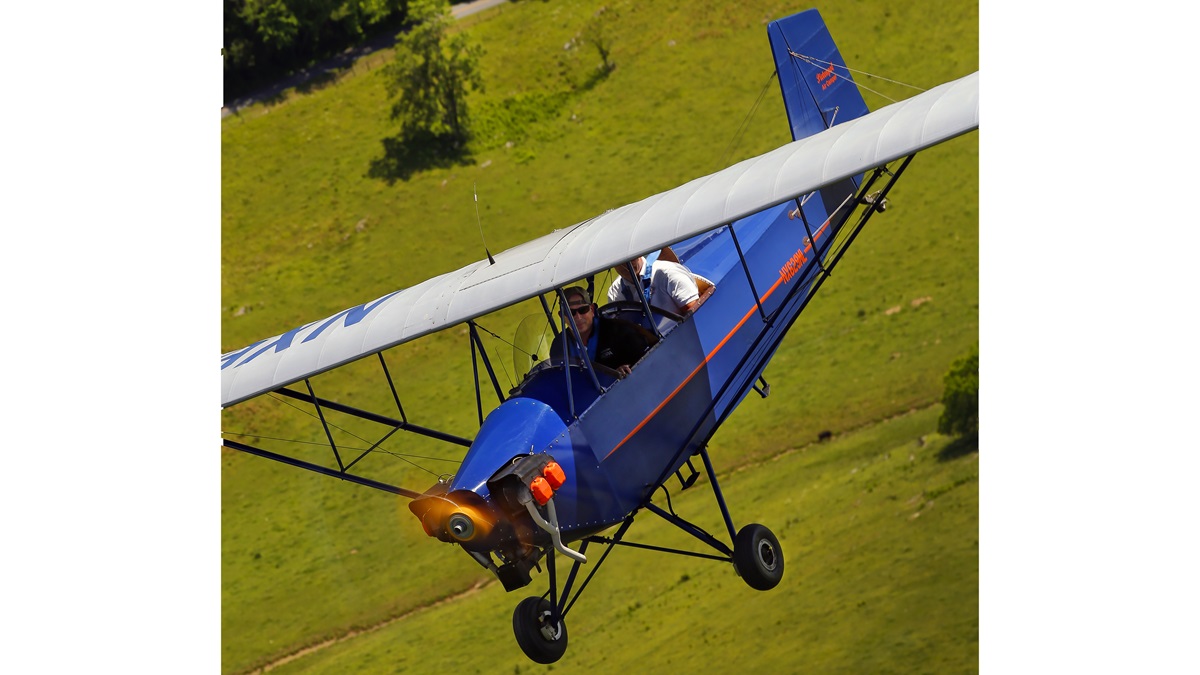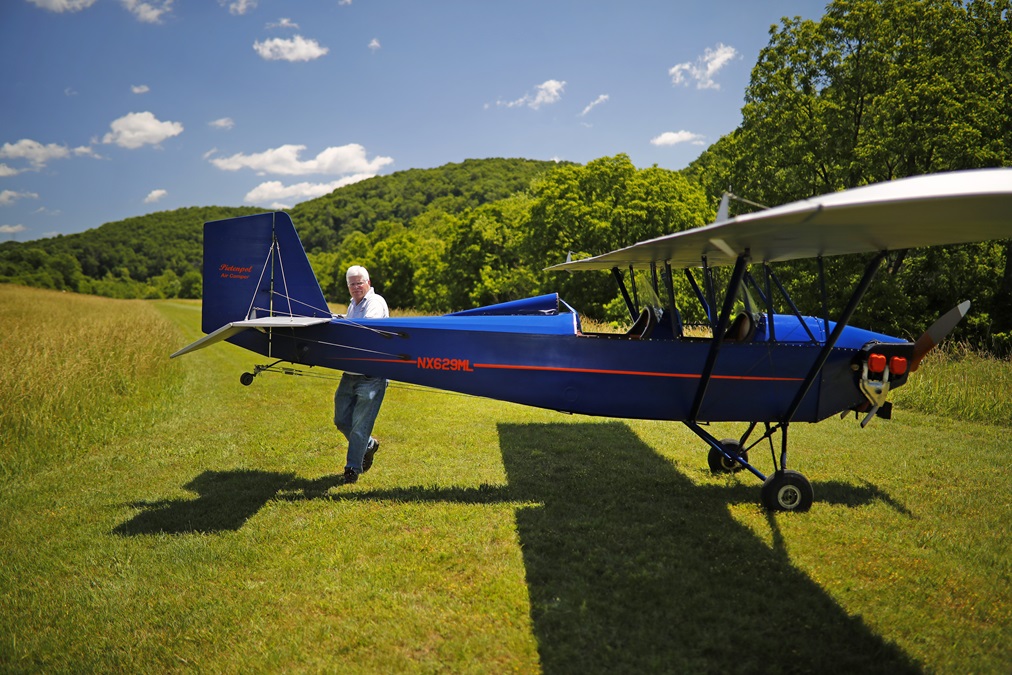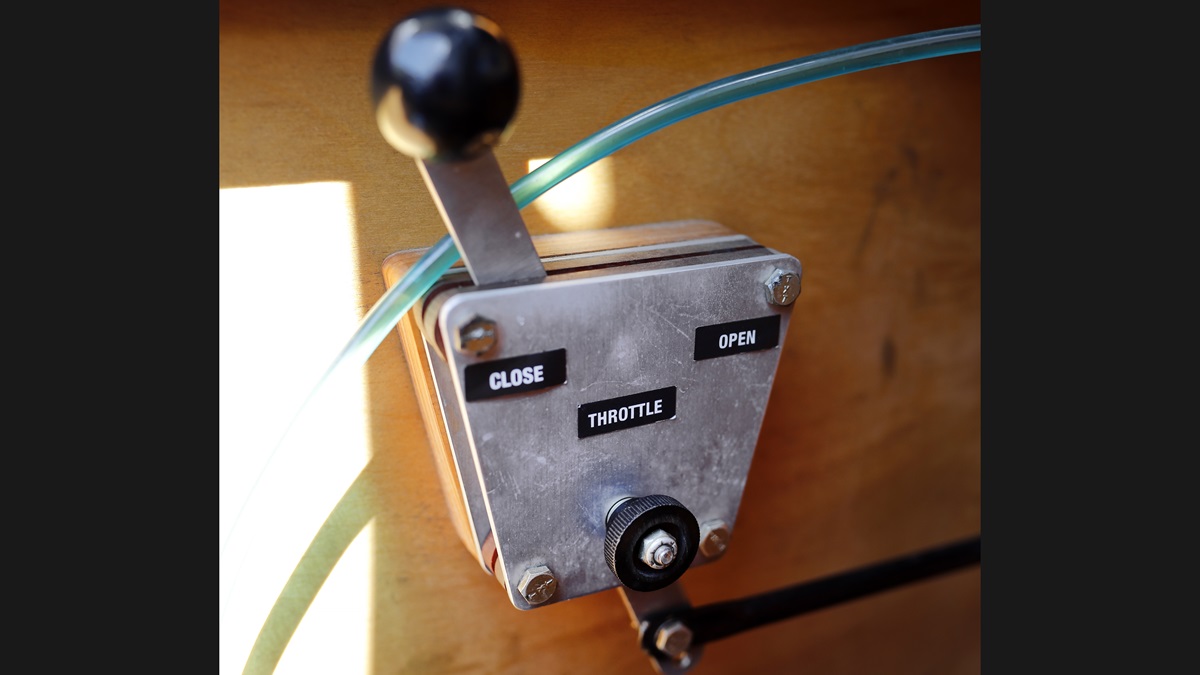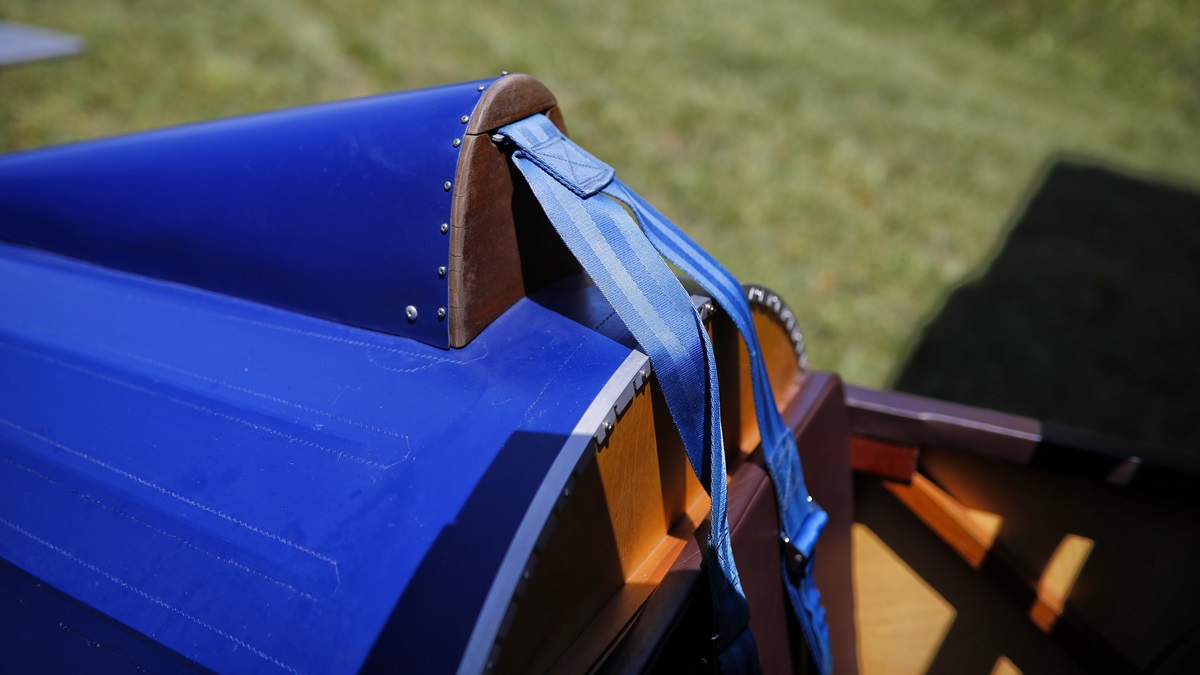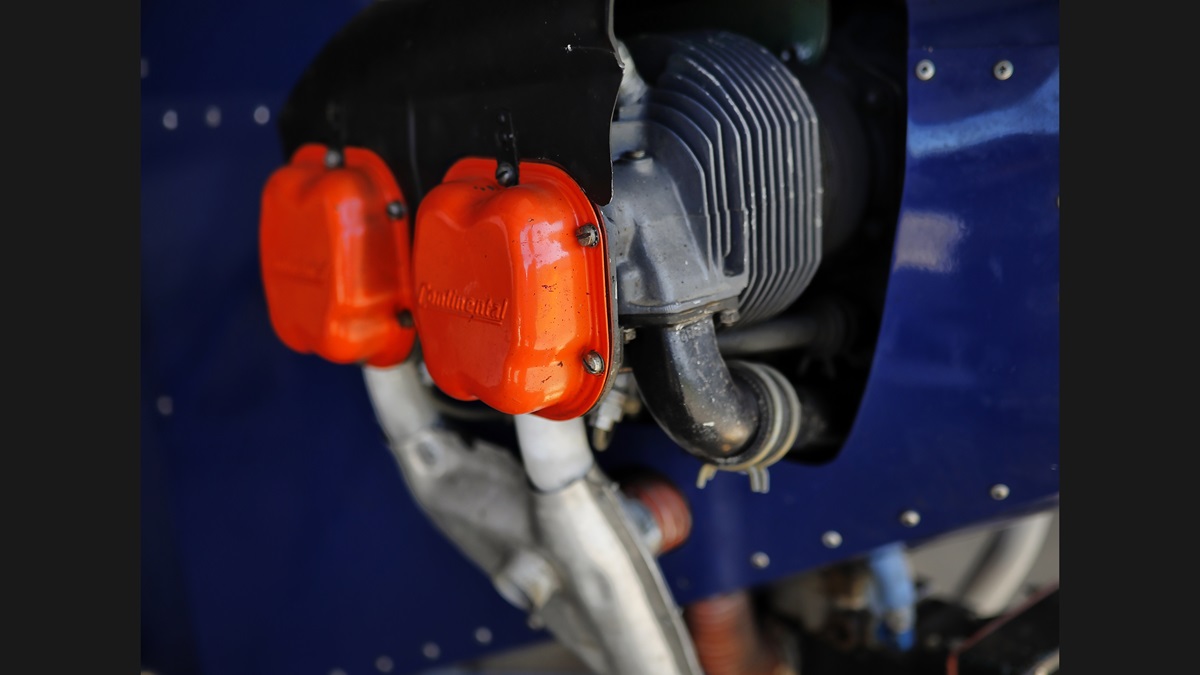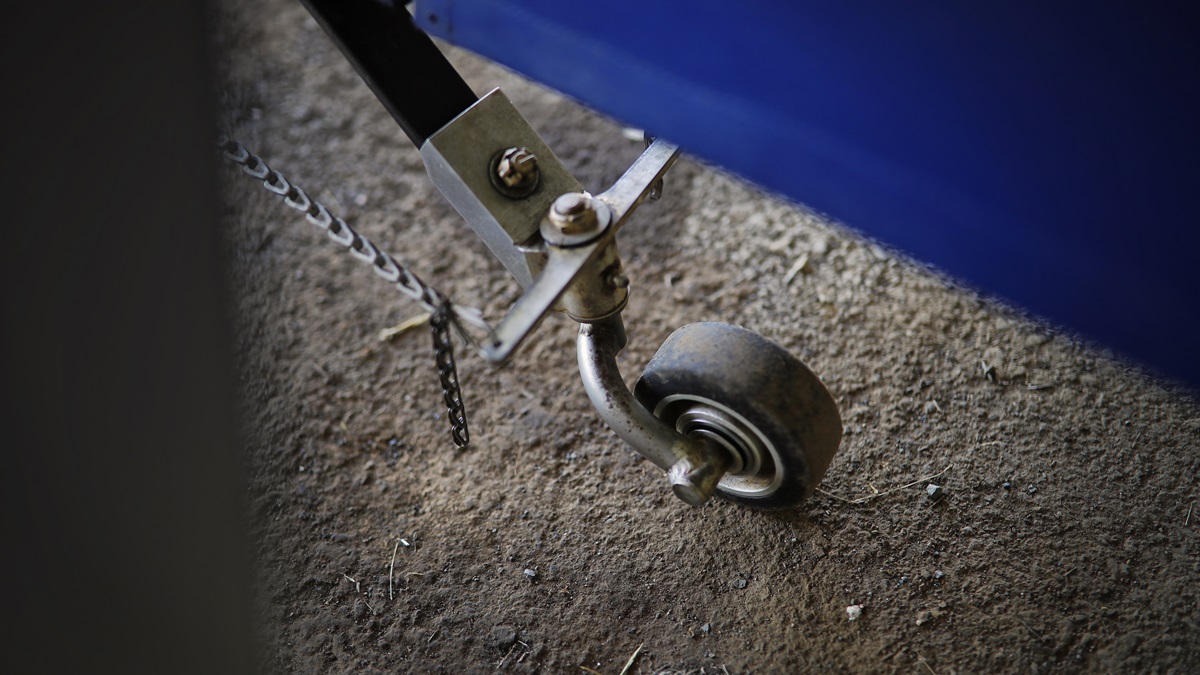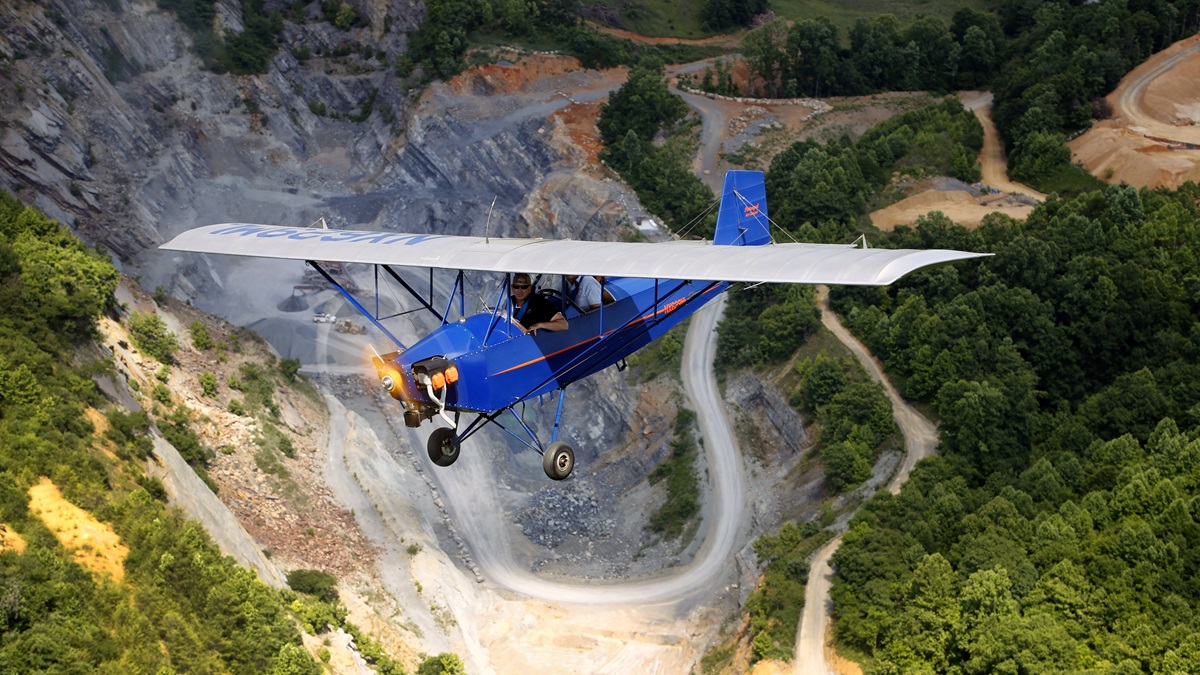Smile maker
The Pietenpol Air Camper is built for fun
Crazy because you’re about to take off toward a monster of a tree in an airplane made of wood, from plans drawn in the late 1920s, constructed by a man you’ve just met who has no formal training.
Only after clearing the first row of trees do you relax somewhat—and only many minutes later, when it’s apparent you can glide to a field if the 65-horsepower engine fails, do you begin to smile and enjoy the view. Soon you relax and allow yourself to feel the wind cooling your face. Doing lazy circles at 500 feet above the valley on a warm summer afternoon in a Pietenpol Air Camper—once you get used to it—represents the essence of what flying is all about.
The Piet is one of the barest forms of flying. Most Air Campers don’t have an electrical system; the instrumentation is usually the FAA minimum; and many don’t have radios or navigation equipment. Not to mention it’s slow, climbs poorly, isn’t particularly roomy, and offers little protection from the elements. None of which really matters. For an airplane like the Piet, the best measure is how the aircraft makes you feel when you’re flying it, and here it excels. It feels relaxed, almost lazy, as if the airspeed indicator should be rid of numbers and replaced with mosey, meander, and lounge. With an arm resting on the side of the cockpit, and an unobstructed view in almost all directions, you’re happy to be doing car speeds.
Everyman airplane
Amateur aircraft designer Bernard Pietenpol created the Piet in the late 1920s. Pietenpol was a self-taught designer with an eighth-grade education, and it took him a few years of trial and error to come up with the final design, which has changed little in the past 90 years. Pietenpol settled on a rectangular parasol wing, and simple dual-cockpit layout. He was obsessed with keeping the price down while keeping the airframe strong—because Pietenpol was essentially a self-taught pilot as well. In his estimation, the Air Camper represented an “everyman” airplane; keeping the plans straightforward, and the construction materials easy and inexpensive to source, was critical.
It’s why Pietenpol was drawn to automobile engine conversions to power the Air Camper. He toyed with many different options during development before settling on the Ford Model A as the best in terms of tradeoffs between power and weight. The original plans call exclusively for the Model A engine, even though aviation alternatives existed at the time. In the 1960s Pietenpol amended the plans to include the option of a Chevrolet Corvair engine, and many builders today choose to follow Pietenpol’s vision and fit one of the two official choices up front.
As much as tinkering was Pietenpol’s nature, so too does it define the community of builders. Pietenpol’s grandson, Andrew Pietenpol, still sells the plans, and he says builders have tried more than 60 different engines in the Piet. For builders in love with the Air Camper’s design but dubious of using an ancient car engine, the Continental A-65 seems to be the powerplant of choice.
Wood remains the primary method of construction, although a steel fuselage set of plans is available. Andrew Pietenpol expresses a bit of “If it ain’t broke don’t fix it” advice on the company’s website, and many builders agree. Although modifications have been designed for the practical and the personal, Piet builders seem to embrace the historical simplicity of the airplane, and use the plans as a reliable guide.
Working Piet
Matt Paxton’s hangar looks more like a shed at this rural airport, and the Piet sits low and inviting inside. At the private and uncharted grass strip, Paxton’s Piet is the only flying airplane. Another Air Camper is being rebuilt in the hangar next door, but the owner rarely comes around. With almost 3,000 feet of grass the runway is more than enough for the lazy Piet, but the surrounding trees make it feel tight, not to mention private. A river borders one side of the airport and kayaks lie ready in the bigger hangar. It’s a private aviation oasis.
Paxton isn’t your typical airplane builder. He likes to tinker, but it’s not his passion. The Air Camper is the first Experimental aircraft he’s owned, and he said he hadn’t harbored long-held aspirations of building one. Paxton used to own a “go someplace” airplane in a partnership before the Piet, but wasn’t flying it enough to justify the cost. Then at Sun ’n Fun a friend wanted to check out a Piet and Paxton tagged along. Something about the basic construction and historical nature appealed to him. And somewhat on a whim he decided to give building one a try. “I have to say I wasn’t really methodical about it.”
One of the things that appealed to him was the cost. Because the airplane is built from plans, Piet owners can source materials as budget permits. Paxton bought the spruce from a company in Canada that’s now out of business, but new builders can turn to Aircraft Spruce and Specialty for aircraft-grade spruce. A full airframe will cost a little more than $3,000. Or builders can purchase locally if they know what they’re looking for.
Depending on which engine is chosen the entire project can be done for around $20,000, and you can buy a used Piet for $12,000. Even the tools needed for construction are relatively common woodshop items such as a good table saw, drills, and the like.
Paxton likes woodworking but was a novice when he began. “I had built balsa and tissue models as a kid. If you’ve done that, this is the same thing, just bigger,” he said. “The biggest initial challenge was finding a place to do it.” He rebuilt an old garage on his property to start, then moved to an abandoned milk parlor, and finally to a standard two-car garage. Paxton says the airplane took “seven years, three shops, and two wives” to complete.
What he built is safe and flies well, although it’s not a show airplane. Paxton calls it a “working Piet.” Instead he focused on keeping the airplane light, at less than 650 pounds; inexpensive; and fun. Paxton stuck almost entirely to the plans, with a few modern additions. The design is so old it calls for a tail skid instead of a tailwheel, so he added a tailwheel. Paxton also added shoulder harnesses and opted for the three-piece wing, a modification that enables builders to use smaller shops for construction. Finally, he added a fuel tank in the nose, opting for a small baggage compartment in the wing’s center section where the tank normally resides.
He loved having to come up with creative solutions to the challenges presented in the plans. “Fifteen percent of the hours were just looking at the plans and thinking things through,” he said. “I remember one time I had a dream about something I was trying to do. I woke up and it was kind of like Archimedes jumping out of the bath going eureka.” Like all Piet builders, Paxton had to design and fabricate ways to fit the tires, brakes, and meet dozens of other challenges that Bernard Pietenpol didn’t bother to detail (or couldn’t because the technology hadn’t yet been invented).
Even though the Air Camper is an airplane meant for lazing around the neighborhood, Paxton has taken it from his home in Virginia to Oshkosh a few times, and to Old Rhinebeck Aerodrome in New York. He may not own a go-places airplane these days, but he still tends to go places. “It’s not uncomfortable to fly it all day. I’ll fly it for eight or 10 hours and the only things that get really tired is my back and my butt,” Paxton said.
Flying the Air Camper is not unlike flying a Piper Cub. Paxton raised the parasol wing, which is an essential modification if you ever want to have a front-seat passenger. Stepping in, the airplane flexes and shimmies. Once settled the seats are moderately comfortable, but snug. Without an electrical system the airplane is hand propped, and Paxton has experimented enough to get it to start on the first pull. The takeoff gives the same putt-putt-putt as the Cub as you slowly work skyward. The performance is marginal, maybe 300 feet a minute on a summer day. Once at cruise the Piet lazes along at between 60 and 70 miles per hour. Paxton says speed depends on which propeller the owner is using, how much the airplane weighs, and which engine it has. He chose the Continental for reliability, while others chose the Ford or Chevy for historical accuracy. In other words, speed isn’t really a factor. The focus is on building what you want and making a statement with your choices. Otherwise it’s a very straightforward airplane. Given how light the Piet is, how inexpensive it is, and how small it is, there’s a sense when first seeing one that it blurs the line between airplane and ultralight. Once aboard, you begin to understand that it’s a true airplane, a sort of historic reproduction with some modern conveniences.
Whether a showpiece or working airplane, the objective is always fun. And on a sunny day at 500 feet, arm out getting a tan, that’s exactly how it feels.
Email [email protected]
